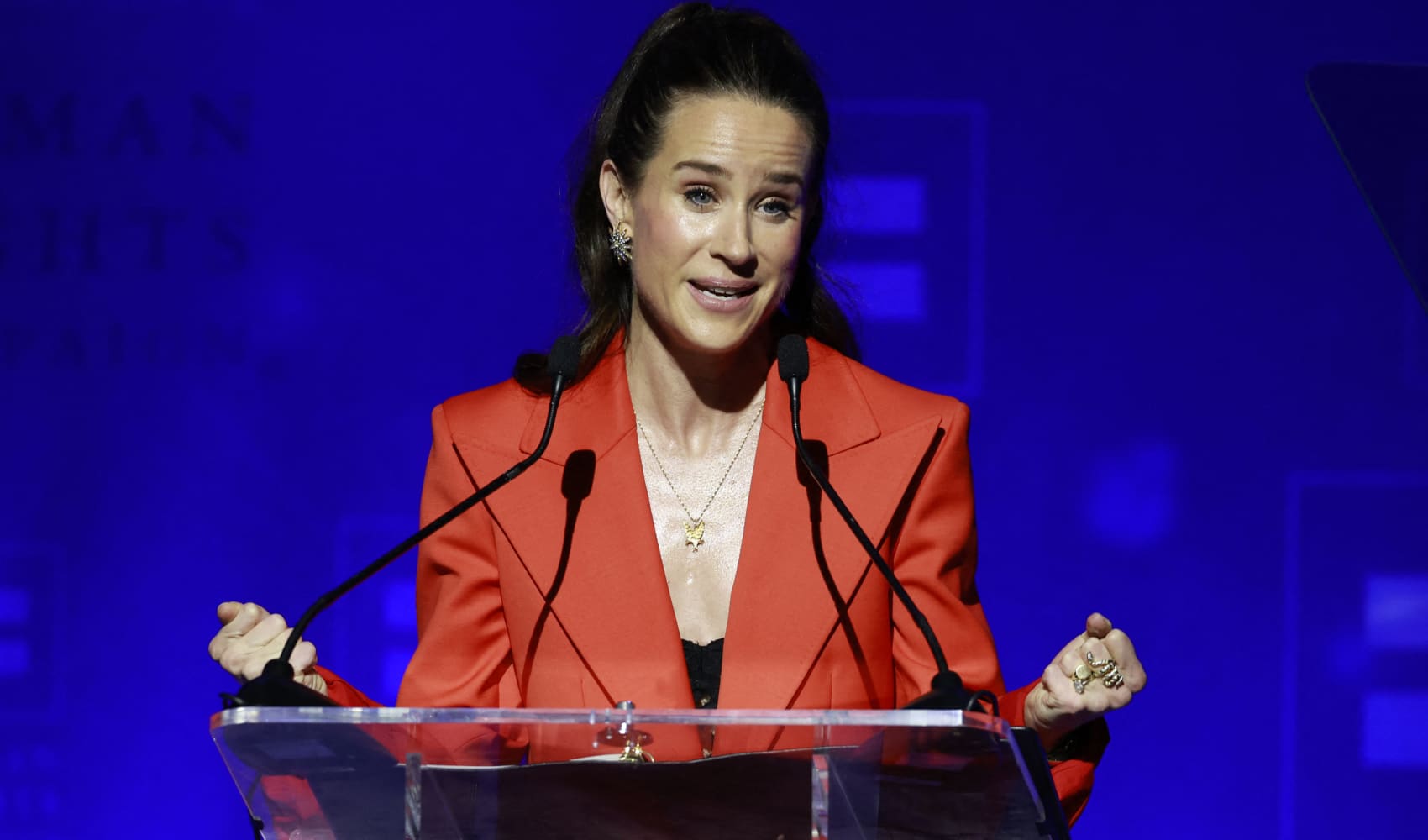
- J.P. Morgan shares have been under pressure this year, along with many other big bank stocks, but it has faced particular scrutiny over its increased spending.
- Digital expansion overseas and other technology goals are costing billions, but JPMorgan CEO Jamie Dimon views these costs as critical at a time of increased business threats.
- Wall Street analysts say JPMorgan has a good track record of delivering return on investment, but technology is an area where it is more difficult to evaluate the payoff.
Jamie Dimon has earned his credibility from investors, running one of the tightest ships in the banking sector and delivering on targets repeatedly over the years. But as JPMorgan Chase gets set to release one of the bellwether earnings reports of the season this week, the long-time Wall Street CEO is busy trying to win a messaging war that the bank has struggled with in recent months. After its last earnings, when JPMorgan revealed it was spending billions of dollars more than it had previously forecast, up to $3.5 billion more, analysts and shareholders were unsettled.
In his closely read annual letter to shareholders released last week, Dimon provided his latest defense of bank spending, and in particular, technology spending, writing of the existential threat to the traditional banks from fintech rivals and market giants like Walmart and Apple encroaching on its turf.
The threat is an issue Dimon has opined on at length in recent years — he called one section of the letter "Competitive Threat Redux" — and the spending issue related to it isn't likely to go away. Dimon wrote in the letter the spending will continue, and the Wall Street pushback which began last quarter is likely to continue as well.
Get South Florida local news, weather forecasts and entertainment stories to your inbox. Sign up for NBC South Florida newsletters.
The gap between investors and JPMorgan may not be possible to resolve in any CEO letter or quarterly report. Technology investments need to be made, but tech is an area of spending in which it is difficult to determine return on investment in the short term. And last quarter, the $3.5 billion on top of an already increasing investment profile was a lot to take, even from a management team that has proven its ability to generate returns on investment.
"None of these things happen in a vacuum and the management team has a history of execution," said Jim Mitchell, Seaport Global financial services sector analyst in an interview after the last earnings. "The management team does matter ... so there should be willingness to give them some credibility for spending all that money, but from the investor standpoint, it is a big step up in spend," Mitchell said.
And it came on top of multiple times the bank raised expense guidance last year. "The magnitude was more than people expected," he said.
Money Report
The banking sector has been in the red this year, and JPMorgan's roughly 17% year-to-date decline is among the larger losses in the big bank group.
There is a "little bit of near-term purgatory," Mitchell said. "It was all just up. I was a little surprised they didn't have a better answer other than 'we need to do it.'"
Dimon's letter to shareholders did attempt to expand on that answer, by first repeating his warning from recent years that the technology threats are everywhere.
"Last year alone, $130 billion was invested in fintech, allowing them to speed things up — and at scale," Dimon noted. "The pace of change and the size of the competition are extraordinary, and activity is accelerating."
He called out Walmart, which has over 200 million customers visit their stores each week and can use new digital technologies to bring banking-type services to their customers. And Apple, which already has Apple Pay and the Apple Card, and is moving into payment processing, credit risk assessment, person-to-person payment systems, merchant acquiring and buy-now-pay-later offers.
All of this is occurring alongside a diminished role for banks, which Dimon laid out by the numbers.
- U.S. banks' loans now represent only 8% of total U.S. debt and equity markets, down from 11% in 2010.
- Banks' share of mortgage originations has gone from 91% to 32%.
- Banks' share of the leveraged loan market has decreased over the last 20 years from 46% to 13%.
- Neobanks now have over 50 million accounts.
"I can go on and on, but suffice it to say, we must be prepared for this trend to continue. … sometimes it truly is change or die," Dimon wrote.
All the big banks are spending on tech, and spending similar amounts relative to their assets in recent years, according to Gerard Cassidy, large cap bank analyst and head of U.S. bank equity strategy at RBC Capital Markets.
"Half tech spend is to run the bank and half is to change the bank," Cassidy said in an interview after the last earnings.
But JPMorgan's spending continues to trend higher while Bank of America's is flat.
One of the big items that stands out from the JPMorgan spending relates to overseas expansion. Investors are finally coming to realize how much the company's overseas expansion strategy that relies on digital will cost. "All of us maybe didn't appreciate the cost of the expansion into England and completely digital expansion," Cassidy said.
Dimon responded to this issue in the annual letter, saying starting from scratch in creating a virtual version of what already exists physically in the U.S. with is branch networks is the right way to go overseas, but he didn't provide much clarity.
"We believe the digital world gives us an opportunity to build a consumer bank outside the United States that, over time, can become very competitive — an option that does not exist in the physical world," Dimon wrote. "We can apply what we have learned in our leading U.S. franchise and vice versa. We may be wrong on this one, but I like our hand," he wrote.
Investors, though, will be looking for more hard numbers, and some banks have begun to increase disclosure on digital.
Bank of America is disclosing more digital metrics and has shown its ability to grow the consumer business digitally, with almost half of all consumer bank product sales now conducted through digital channels and deposit transactions done digitally and at ATMs now nearing 90%.
For all the banks, there will be more need for more data on how the investments in technology being made to "change" the industry are working.
"These are the metrics we want to see for all banks to see if digital adoption is strong," Cassidy said.
Analysts concede metrics on tech payoff are hard to produce in the short term. But on the other side, "To just give them carte blanche to spend X billions to do it ... now people are saying you've got to start showing us some metrics on level of returns we find acceptable," Cassidy said. "We want to see the metrics supporting success, and the more reluctant a bank is to disclose, the more people start to scratch their heads."
In all, investments in technology and operations, at a little under $2 billion, "are the most complicated category," Dimon wrote. And in the letter he prepared shareholders for the investments to continue.
"Sometimes people refer to some of these expenses as modernizing or adopting new technologies. … the term implies that once you get to a modern platform, these expenses should dramatically decrease — which is rarely the case. … Technology always drives change, but now the waves of technological innovation come in faster and faster," he wrote.
"Every year we are seeing increases, so at what point does it level off? Can you spend $20 billion a year methodically, or is it reckless at some point?" Mitchell asked.
Proof over time, measured in above average growth across platforms and market share gains should result in greater operating leverage and incremental margins. And analysts says the track record of JPMorgan's management team should breed some confidence, as well as the fact that it has been one of the more aggressive banks in trying to get on top of all the changes going on around tech, and fintech and the marketplace.
"At some point there should be a crossover to efficiencies and improving margins," Mitchell said. "Right now, Dimon is just saying 'trust me. ... I think long-term they will be a winner. It's just always hard to know when the market will be convinced of that and not worry so much about expenses. We will be looking every quarter and checking," Mitchell said.
Cassidy is willing to give JPMorgan the benefit of the doubt. "Three or four years from now the numbers should play out to prove a successful strategy, but you can't measure it in less than 6 months."






